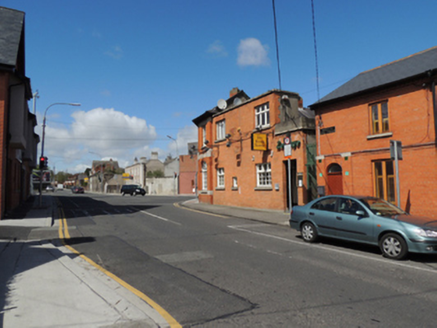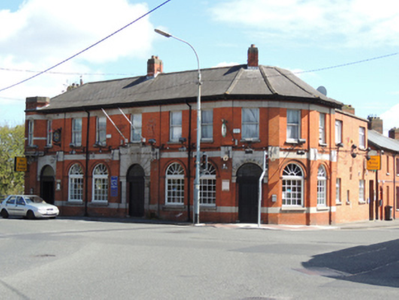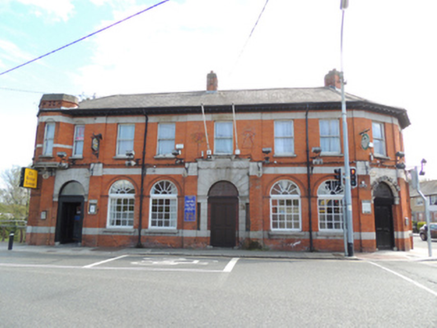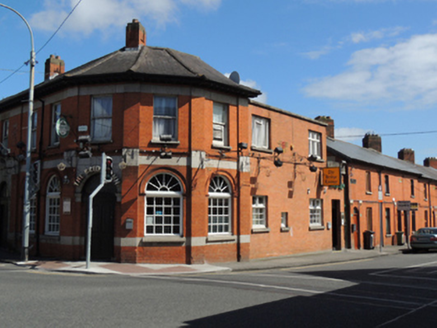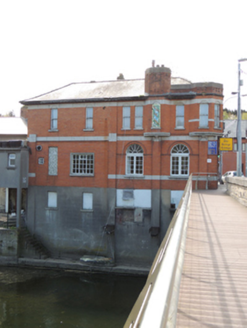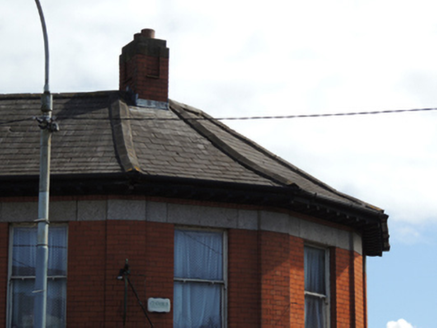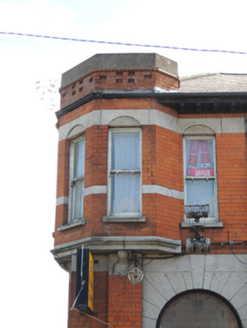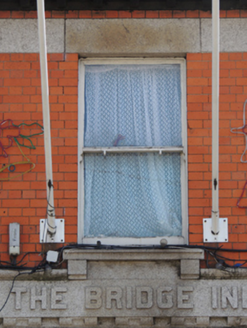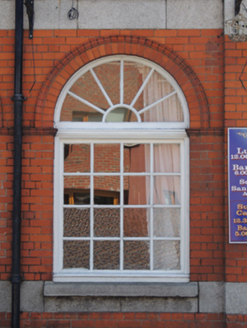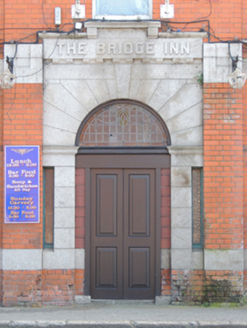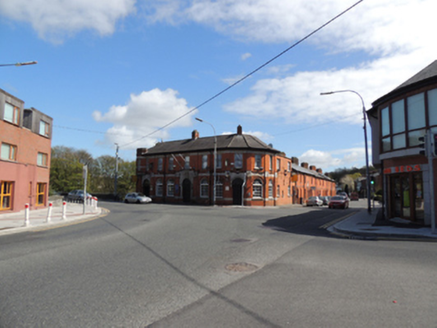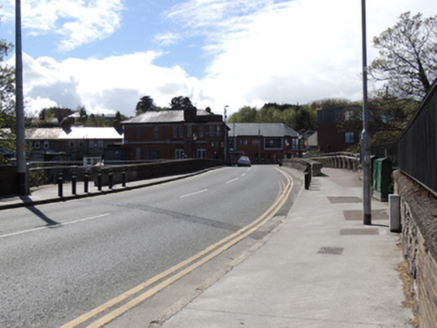Survey Data
Reg No
50080355
Rating
Regional
Categories of Special Interest
Architectural, Historical, Social
Original Use
Public house
In Use As
Public house
Date
1910 - 1915
Coordinates
310208, 234302
Date Recorded
29/04/2013
Date Updated
--/--/--
Description
Corner-sited attached public house, rebuilt 1913, with seven-bay front (north-west) elevation to Chapelizod Road, canted corner bay, and two-bay elevation to Saint Laurence Road to south-west. Octagonal-profile turret to first floor of north-west corner. Later two-bay two-storey red brick extension to south-east. Hipped slate roof with timber eaves brackets, red brick chimneystacks and cast-iron rainwater goods. Machine-made red brick walls having cut granite platbands. Tiled advertisement panel for ‘SELECT / TEA / ROOMS’ to first floor of north-east elevation. Square-headed window openings to first floor, having single-pane timber sash windows and cut granite sills. Round headed window openings to ground floor, having moulded red brick voussoirs, timber-framed window surmounted by sunburst toplight. Round-headed door opening, with cut granite voussoirs and leaded fanlight. Recent double-leaf timber panelled door, flanked by cut granite engaged pilasters on red brick plinths. Carved lettering in relief over door ‘THE BRIDGE INN’. Round-headed door opening to north end of west elevation and south-west corner, each having cut granite voussoirs, stained glass fanlight, and recent doors, flanked by engaged pilasters. Recent paving to north-west and south-west, granite kerbstones to north-west.
Appraisal
This public house occupies a prominent position at the junction of Chapelizod Road, Saint Laurence Road and Lucan Road on the south bank of the River Liffey adjacent to Chapelizod Bridge. An early twentieth-century red brick commercial building, it adds to the typological and architectural variety of this residential area. The carved stone lettering and detailing, timber window fittings and turret are noteworthy features which add to its character and charm. Granite kerbstones to the north-west are a reminder of the historic setting of this popular landmark in Chapelizod village, which is the former main road from Dublin to the west. The Bridge Inn was rebuilt in 1913 by Thomas Joseph Byrne, an architect with South Dublin Rural District Council, who designed several labourers’ houses in the area.
